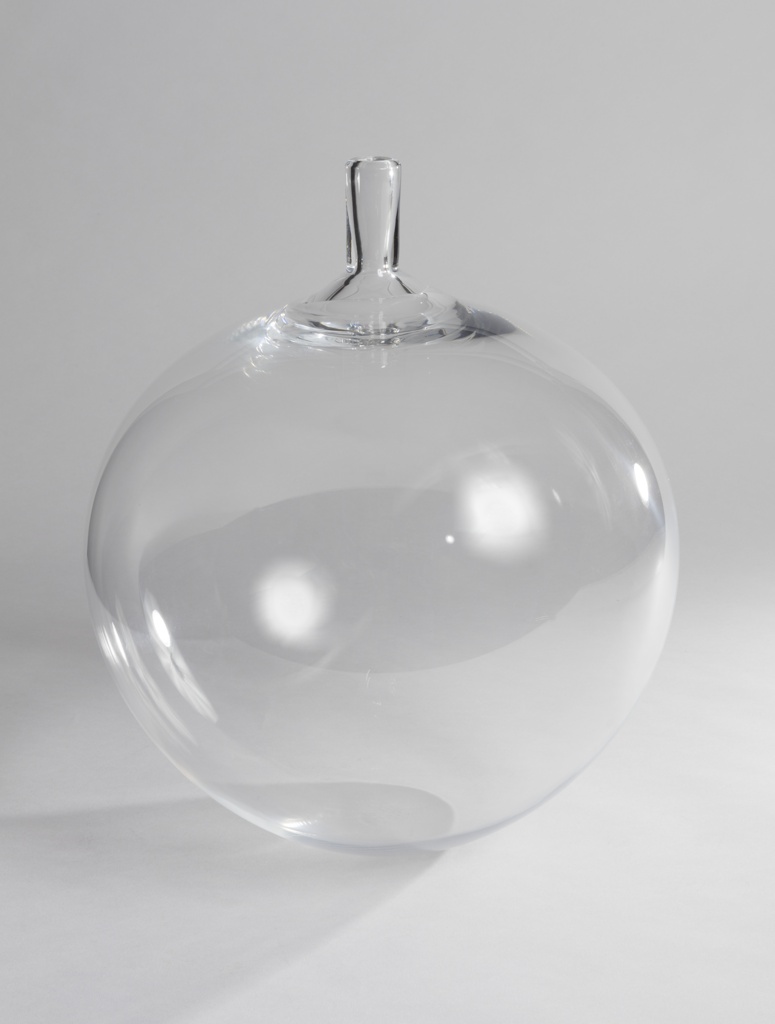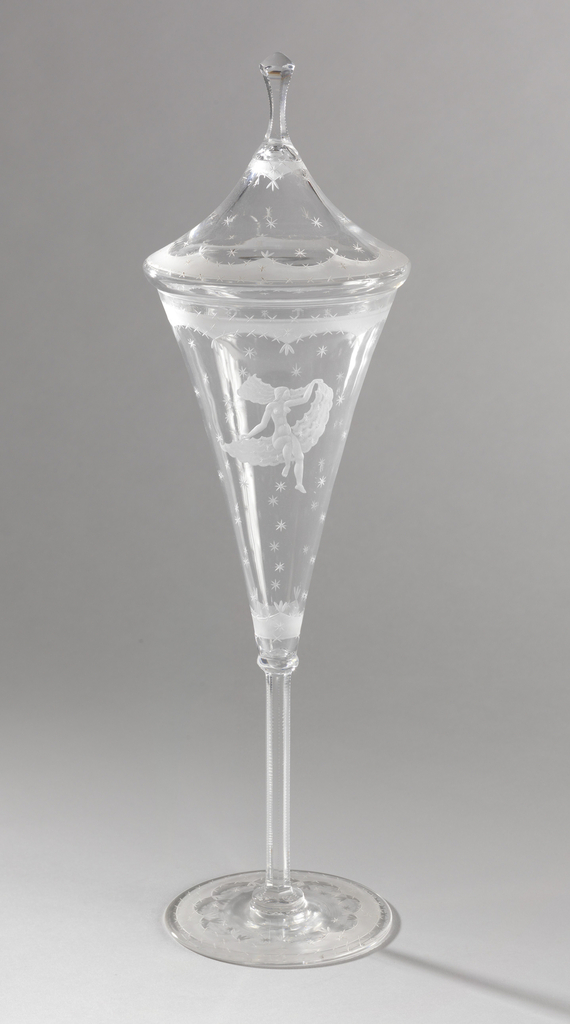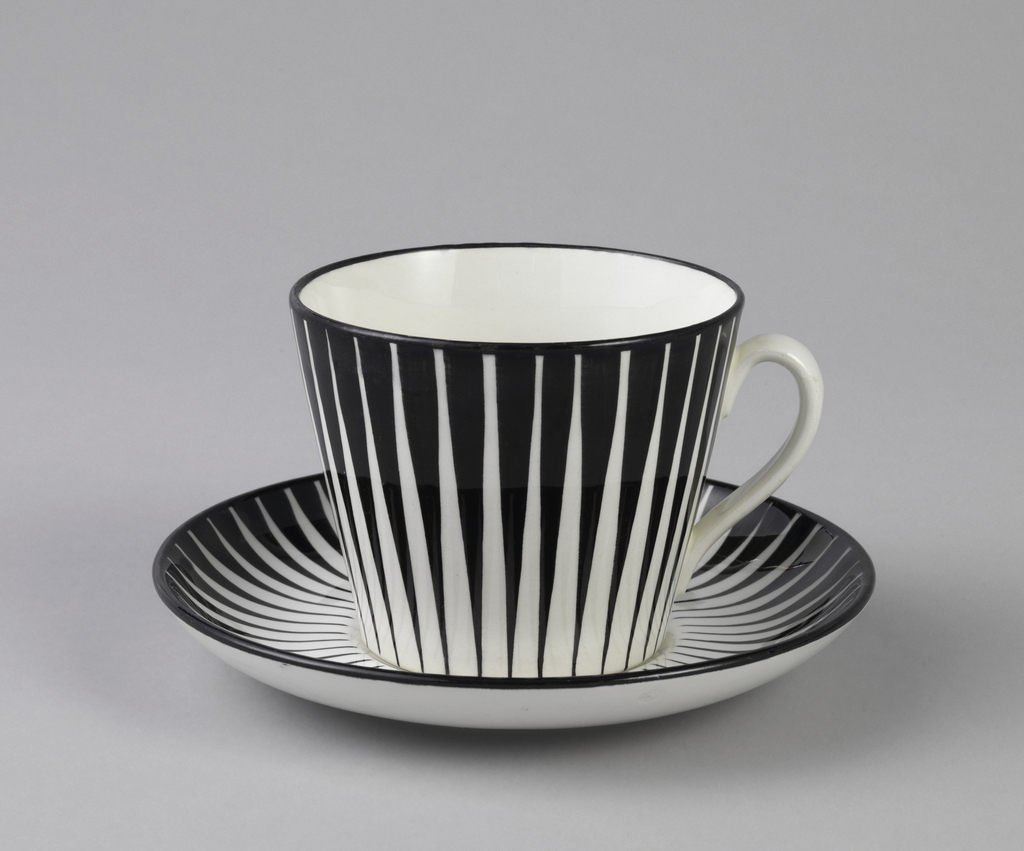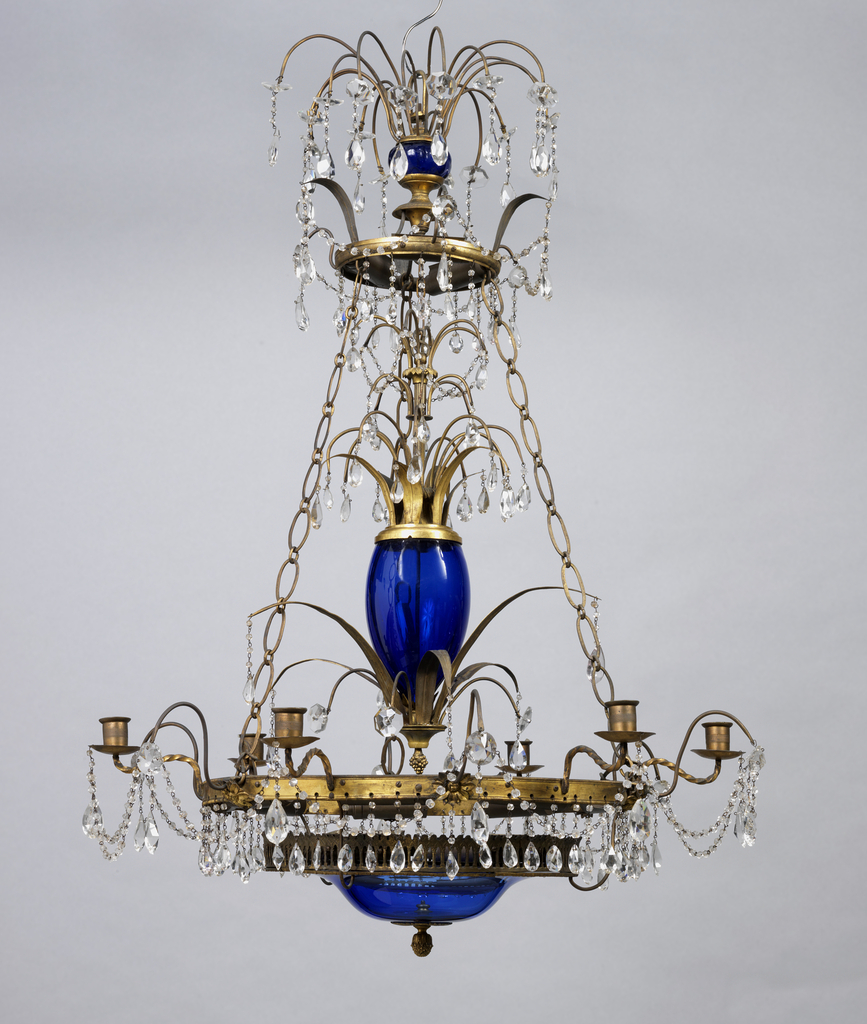For the nearly thirty years between 1947 and 1971, that Ingeborg Lundin designed glassware for Sweden’s Orrefors glassworks, her designs were prized for their originality, simplicity and grace. Founded in 1898, Orrefors originally manufactured bottles, window glass, and tableware. In 1914, the firm started to produce cut crystal, and by 1925 had become internationally renowned...
This tall glass covered vessel was designed in 1923, by Edward Hald, artistic director of the Orrefors glassworks in Sweden. It features engraved decoration of a female figure seated on a fluttering banner, amid a field of stars bordered by scalloped bands. The delicate star and band motifs are carried through in the vessel’s tapered cover...
The mermaid, a creature formed from the upper body of a woman and the tail of a fish, has long been a legendary figure in folklore. From animated films to the sea creatures of sailor lore, the mermaid has been the subject of speculation and admiration. This green-glazed bowl with silver trim designed by Wilhelm...
In calculated contrast, sharp black wedges streak mathematically across a white ground. The black and white stripes that line Eugen Trost’s Zebra cup and saucer accentuate its tapered, circular form just as cleanly as they denote the wild zebra, from which it takes its name. These stripes, however, are hand painted. The Gefle Porcelinsfabrik in...
This three tiered chandelier in the form of a cascading fountain is garlanded with swags of cut glass drops. Three delicately blown baluster-shaped pieces of cobalt glass are linked by chains of gilt metal. The reserved neoclassical form and use of blue glass strongly indicate that the chandelier was made during the last quarter of the eighteenth century in...
David Carlson and Peer Eriksson introduce the Designboost event Back in February, I blogged about the Designboost Web site, likening it to a periodic table of design knowledge. This time, Peer Eriksson and David Carlson were here at Cooper-Hewitt, National Design Museum to run the first BoostEvent in the United States. The theme was “Design...
One of 31 video segments featured in 'Designing Media', the new book, DVD and website by Bill Moggridge. More info on 'Designing Media' available at http://www.designing-media.com Hans is a professor of international health in Stockholm, Sweden. He spent two decades studying outbreaks of disease in remote rural areas across Africa. In 2005 he cofounded the...






